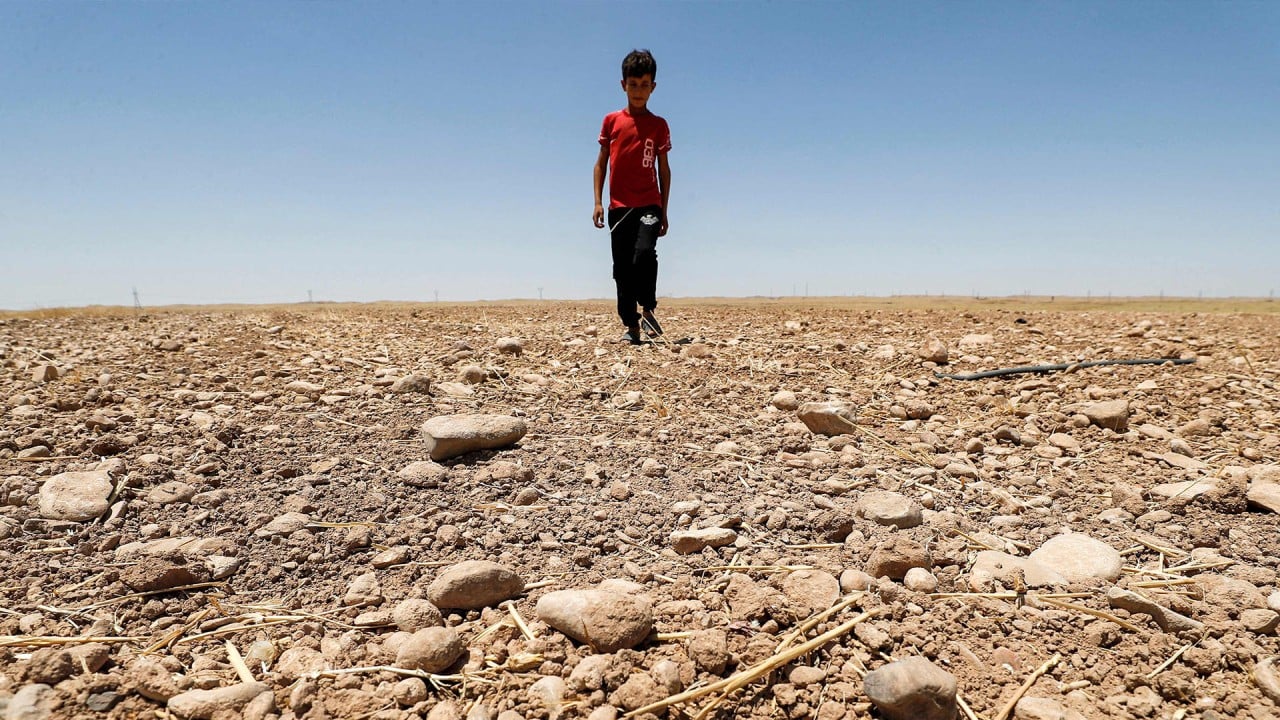
Stay hydrated any place, any time: Chinese scientists develop a low-cost sponge that can suck water from air
- 1kg of the hi-tech material can yield 2.5kg of water in a day, enough for the needs of an adult
- New hydrogel provides a simple and affordable way of water harvesting in dry areas, according to a member of the research team behind the technology
Scientists from China have developed a simple, low-cost, high-performance material with the potential to provide an endless supply of drinking water.
The spongy material can be used for atmospheric water harvesting almost anywhere at any time.
Using a simple home-made vessel, users can generate around 2.56kg (5.6lbs) of drinkable water with 1kg of the hi-tech material in one day, meeting the daily minimum water requirement of an adult. And 1kg of the LCP hydrogel, which has a spongelike texture with a macroporous surface, costs just US$2.80, according to the researchers’ estimate.
The work is being led by Tian Ye, an associate professor with Northeastern University in Liaoning. His team’s results were reported in a paper published in the peer-reviewed journal ACS Applied Materials & Interfaces this month.
Tian’s team employed a new method to rationally fabricate the macroporous hydrogel.
Lyu Tong, first author of the paper, said the unexpected discovery was made by accident.
“I was trying to replace the calcium chloride (CaCl2) with lithium chloride (LiCl) in preparation of hydrogel to check what happens. It turns out lithium chloride droplets inside the hydrogel stay unfrozen under minus 70 degrees Celsius. When it is put into a vacuum system, bubbles inside the droplets burst and create the macroporous structure,” she said.
China’s heatwave sends power usage surging to surpass 2021 record
The porous structures were later proven to be efficient in water sorption.
Traditional hydrogel undergoes passivation – meaning the outer layer tends to form a shell after saturation and block the absorption process.
The Chinese team’s macroporous structure allowed sufficient contact between air and the inner layer, leading to higher performance in water sorption, the team said.
According to the paper, the hydrogel can absorb about 200 per cent of its weight overnight in around 90 per cent relative humidity. If put in water, the hydrogel absorbs 433 per cent of its own weight. Both percentages are much higher than research on other products.
The new technology provides a simple and affordable way of water harvesting in dry areas, according to Lyu.
Users can place hydrogel outside at night, and transfer it into a sealed vessel during the day. The water trapped in the material quickly vaporises when the temperature reaches 50 degrees Celsius under sunlight and with the help of a lens. The vapours condensate on the vessel walls and flow to the bottom.
Putting the sponge on a stove accelerates the process.
The researchers estimated it would take three cycles to draw more than 2kg of water from 1kg of material in a day.
“Modification on vessel walls, such as using radiative cooling materials, will lower the wall temperature. This can further accelerate the condensation of water vapour and increase the amount of liquid water collected,” Lyu said.
The device is simple in structure and, since the collected water is similar to distilled water, it is safe to drink, according to the paper.
Real-world applications for the atmospheric water harvesting technology are easy to find.
Huang Zhijia, a team leader at an outdoor association in Beijing, says the innovative material would be welcomed by long-distance hikers.
“Normally, trekkers need to find water sources along the way. The device provides a new option,” she said.
Other than use in distressed and remote areas, the hydrogel also offers promising opportunities for functional materials, flexible electronics, tissue engineering and biomedical applications, according to Tian.
What does 1 degree on the thermostat mean for climate change?
A usual limit for such water collecting devices is relative humidity, which is a measure of the amount of moisture in the air as a percentage of the maximum moisture the air can hold.
This hydrogel works in a broad range of humidities, from a relative humidity of 100 per cent to less than 20 per cent, covering most conditions on Earth – from a rainy morning in London in November to a sunny Las Vegas afternoon in June.
The porous structure also contributes to the stable physical properties of the hydrogel – it can be compressed or stretched without harming its performance. In a 10-day durability test, the hydrogel showed similar water yields in each cycle.



